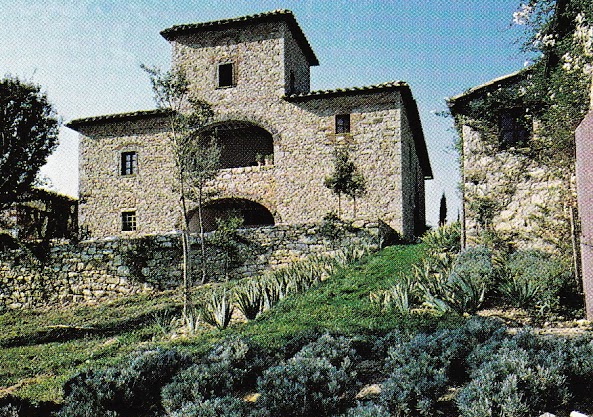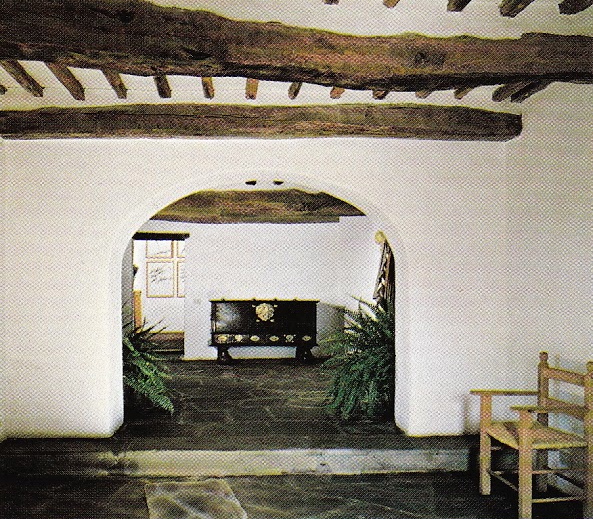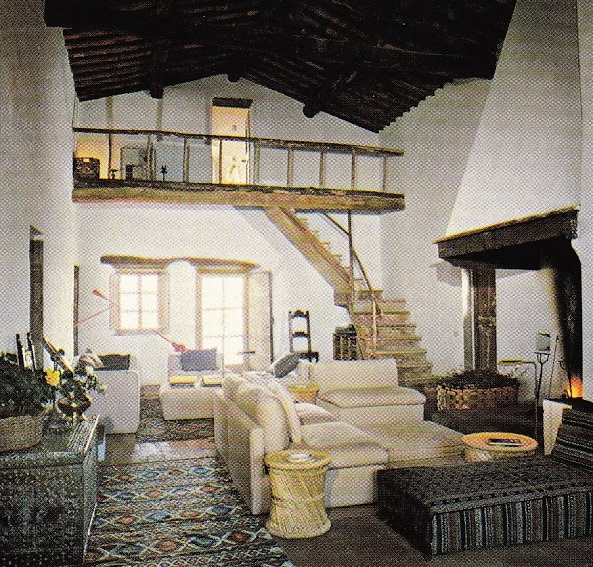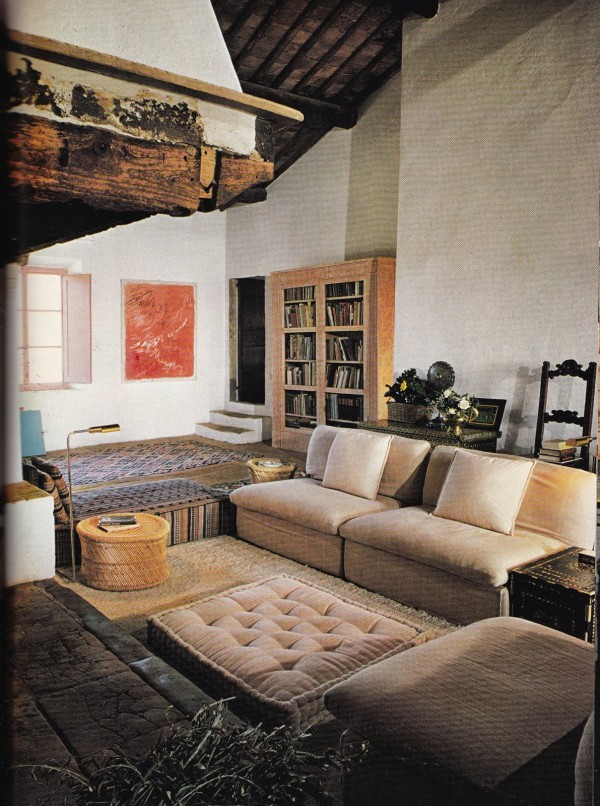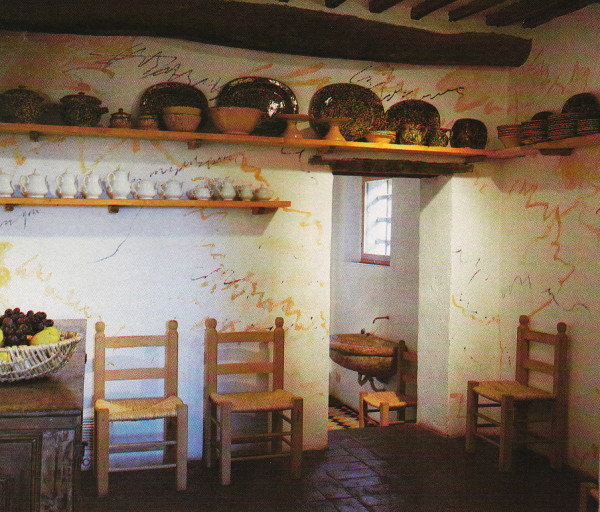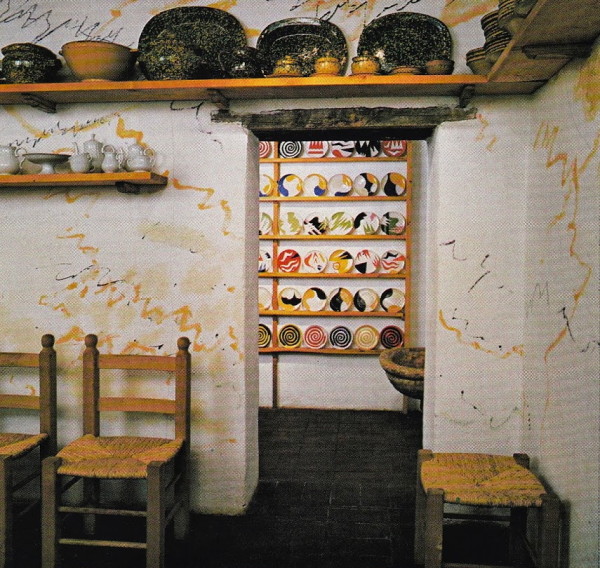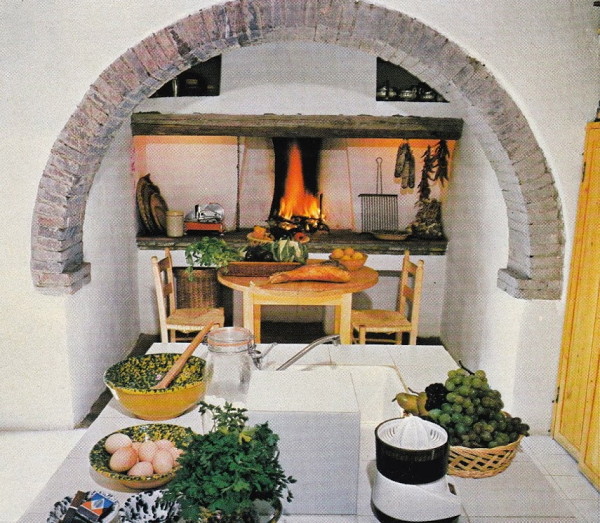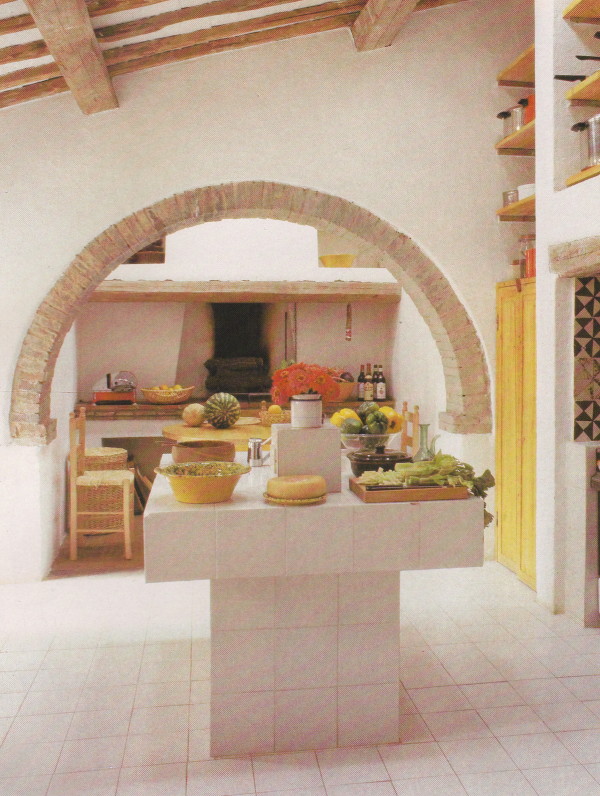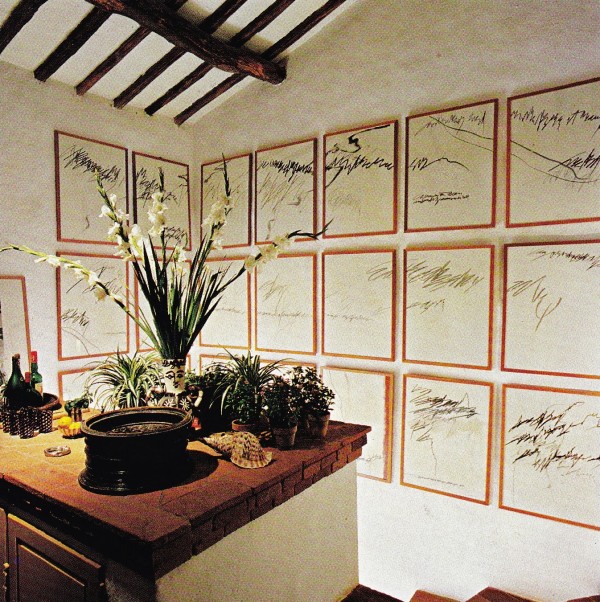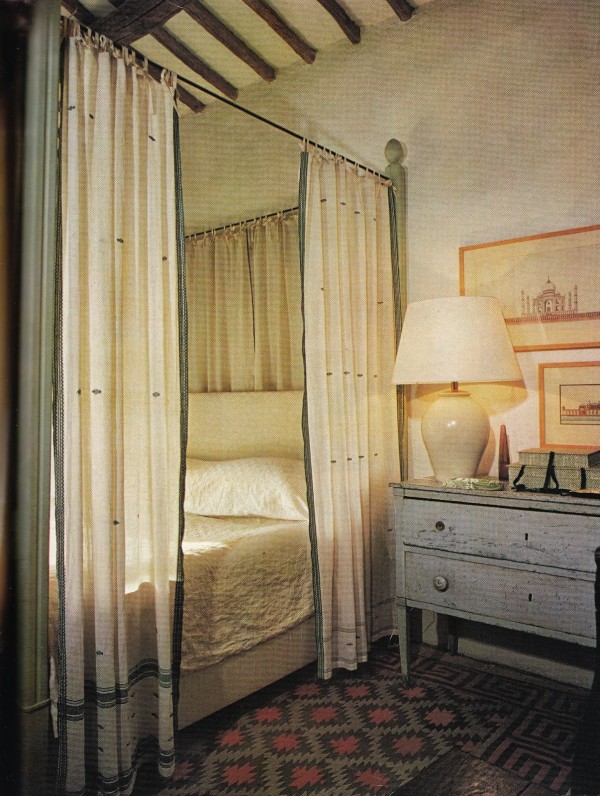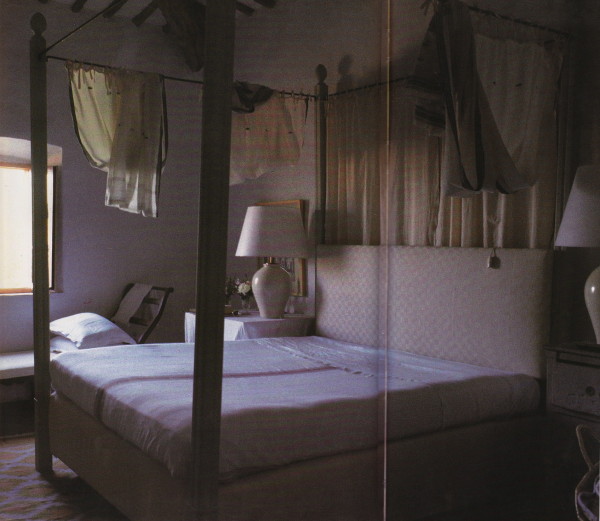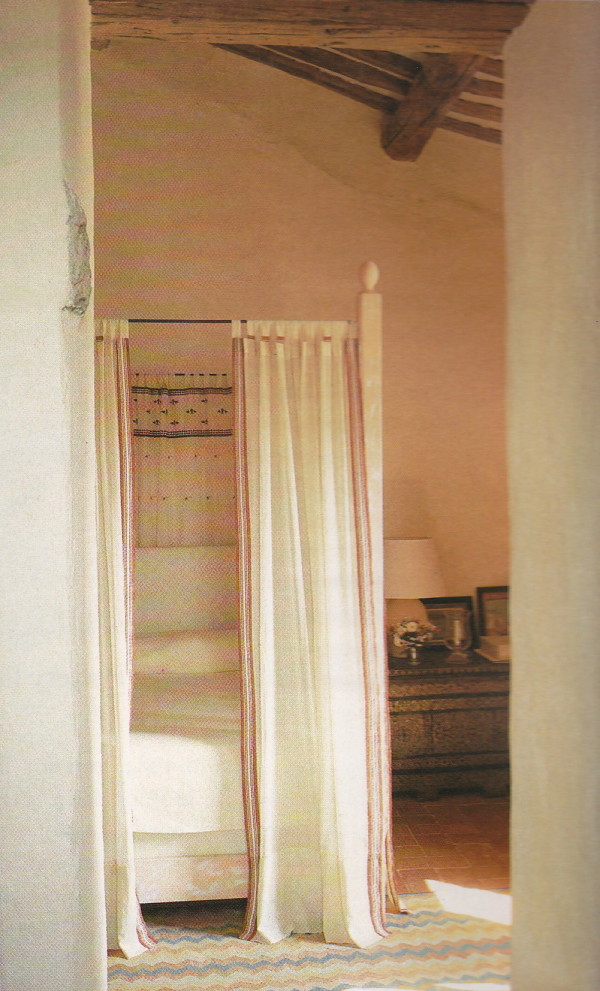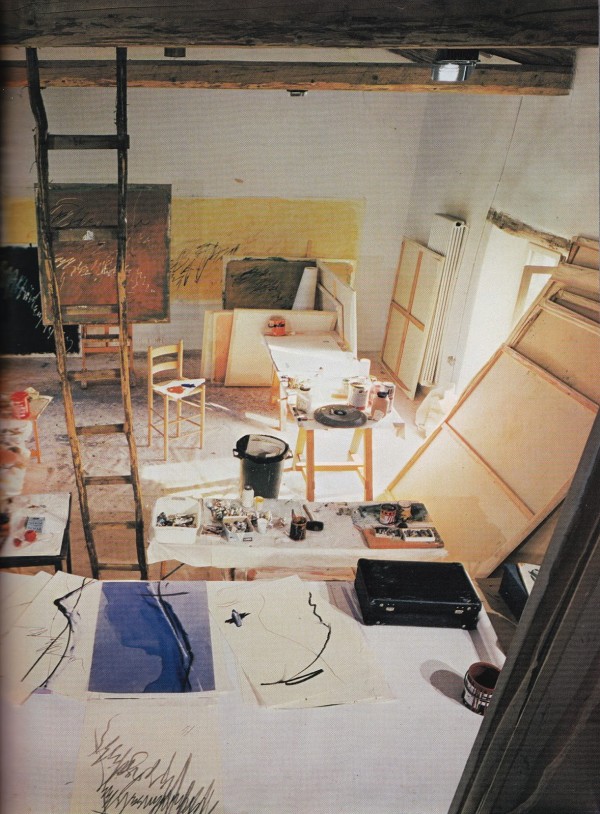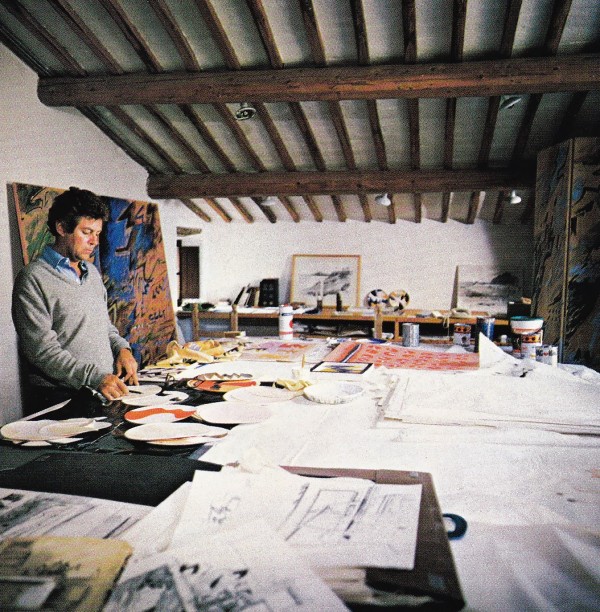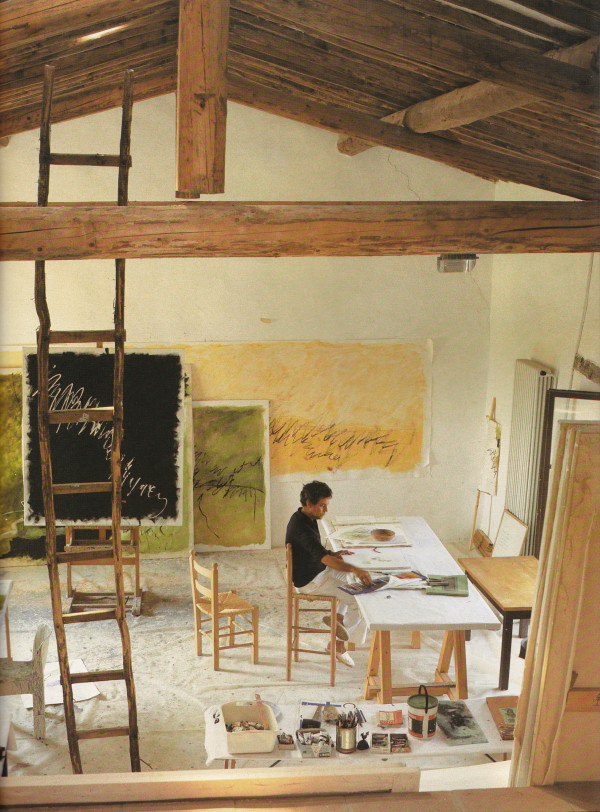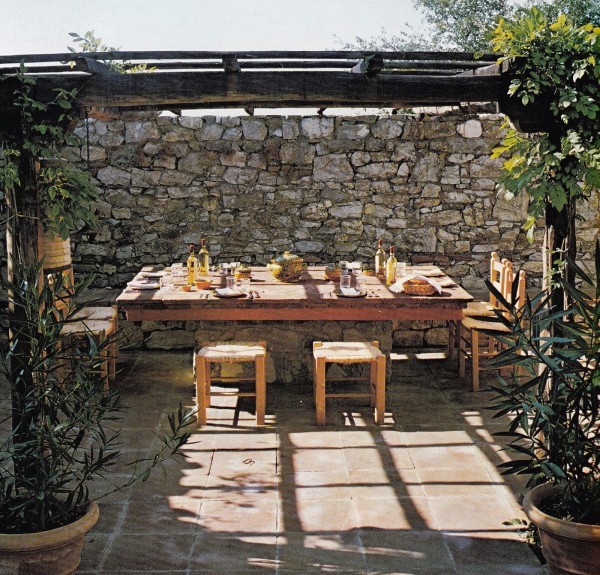It could be said that interior designer John Stefanidis is one of the first influences on the revival of the Tuscan farmhouse as dwelling and the ensuing trend of restoring these casas colonicas, beginning in the 1970’s, particularly among British and Americans desiring a holiday home in the unspoilt terrain of Tuscany. The late artist, and close friend of interior designer John Stefanidis, Teddy Millington-Drake discovered Poggio al Pozzo, a ruin of a stone farmhouse, near Sienna in 1976. Unlike the villas of noblemen previously visited on our tour, Under the Tuscan Sun, Poggio al Pozzo was once a working farm, where sheep and oxen were sheltered on the ground floor inside the house and the most rudimentary and simplest of furnishings – a few chairs, a trestle table and some iron beds – were relegated upstairs, where the family would cook, eat, converse and sleep. For Millington-Drake, however, this was not a restoration but a fresh beginning. “Any invasion of contemporary life is bound to be an intrusion on both the house and the landscape, so it has to have a new character. This isn’t a peasant’s house or a farm anymore.” To capture the soul of the Tuscan region as it existed around the time of Poggio al Pozzo Millington-Drake looked to artists of the 15th-century, such as Giotto, Duccio and Cimabue, for suggestions of rooms that evoked simple dignity and local tradition.
The entrance hall, above, had formerly been a cattle shed. Rough plaster walls, exposed beams and stone flooring lend a sense of rustic simplicity and appropriateness.
Stefanidis introduced unpretentious and simple furnishings throughout that suggest both a casual appeal and elements that had been used in the fifteenth-century, such as chests used for storage and boldly patterned textiles and carpets. Modular upholstered pieces, so popular in the 70’s, are grouped around the sitting room’s tall open fireplace, and again in a conversation area at the back of the room.
Color is introduced through many of the items Millington-Drake had collected on his travels, and from his art: kilim rugs, a Javanese ikat, and one of his painting on the far wall.
The sitting room stretches the length of the house with the bedrooms opening off of it. The staircase, at the far end, leads to an upstairs library, once the pigeon loft. With few and small windows, as most farmhouses would have had, the play of light and use of color was a paramount concern for Stefanidis in the reworking of the rooms for an artist, where light is a valuable yet elusive commodity.
In the tradition of frescoes found in Palladian villas Millington-Drake painted the walls of an ante-room to the dining room with vigorous abstract drawings of a happy nature. “The room was a response to a line in Baudelaire about traveling. The walls are not prepared in any way and the painting is done directly onto the whitewash with acrylic paint and pastel chalks and then fixed. The room needed something on the wall of general interest to stop it becoming just a passage” remarked Millington-Drake.
Another view of the ante-room reveals the Plate Room beyond with the artist’s brightly enameled plates arranged against a wall. Local pottery lines the shelves of the passage.
A traditional Tuscan fireplace is set within a kitchen alcove of fresh white plaster walls, local stone framing the arch, and indigenous country furniture.
Another view of the kitchen gives away the room’s most obvious 1970’s fixture: white ceramic tile covering not only the floor but the island too.
Rustic simplicity is created through the use of honest materials in the dining room, where rush-seated chairs surround a table covered with heavy white cotton set against rough plaster walls and a terra-cotta tiled floor – the whole a perfect foil for Millington-Drake’s raw abstract painting.
Millington-Drake’s Clytemnestra series of drawings is exhibited in a grid along a stairwell. If you look closely you will spot a vase by Picasso holding gladioli.
Stafanidis outfitted a guest room bed with sheer cotton sari cloth tied with bows that match the color of the bed frame, one of Millington-Drake’s durrie rugs, and 18th-century drawings of Indian architecture – a noticeable contrast in an otherwise stark environment.
Another view of the same guest room with the sari panels thrown over the frame feels airy and unpretentious.
Another guest room with a bed hung with saris to compliment the bed and a durrie rug.
The artist’s studio was formerly a barn with hayloft, affording Millington-Drake the luxury of light and space. A view of the main studio area viewed from the upper level reveals the alchemical workings of an artist.
On the upper level of the studio Millington-Drake is preparing maquettes for plate designs.
“When I moved into Poggio I was still painting in an abstract way. I was writing poetry, and some of the paintings and many sets of drawings were in fact poems or phrases written across paper or canvas” said Millington-Drake of his work at the time, in his studio above.
A stone-walled dining terrace with a pergola continues the centuries-old tradition of private and secured al fresco dining.
Our next stop, Tuscany, will be the Renaissance palazzo of Katia and Marielle Labèque, the internationally famous pianist sisters, designed by Belgian architect and designer Axel Vervoordt.
Content for this post is based on an article written by Elizabeth Lambert for Architectural Digest, October, 1979, with photos by Pascal Hinous, and from Living in Vogue by Judy Brittain and Patrick Kinmonth, with photos by Christopher Simon Sykes.











